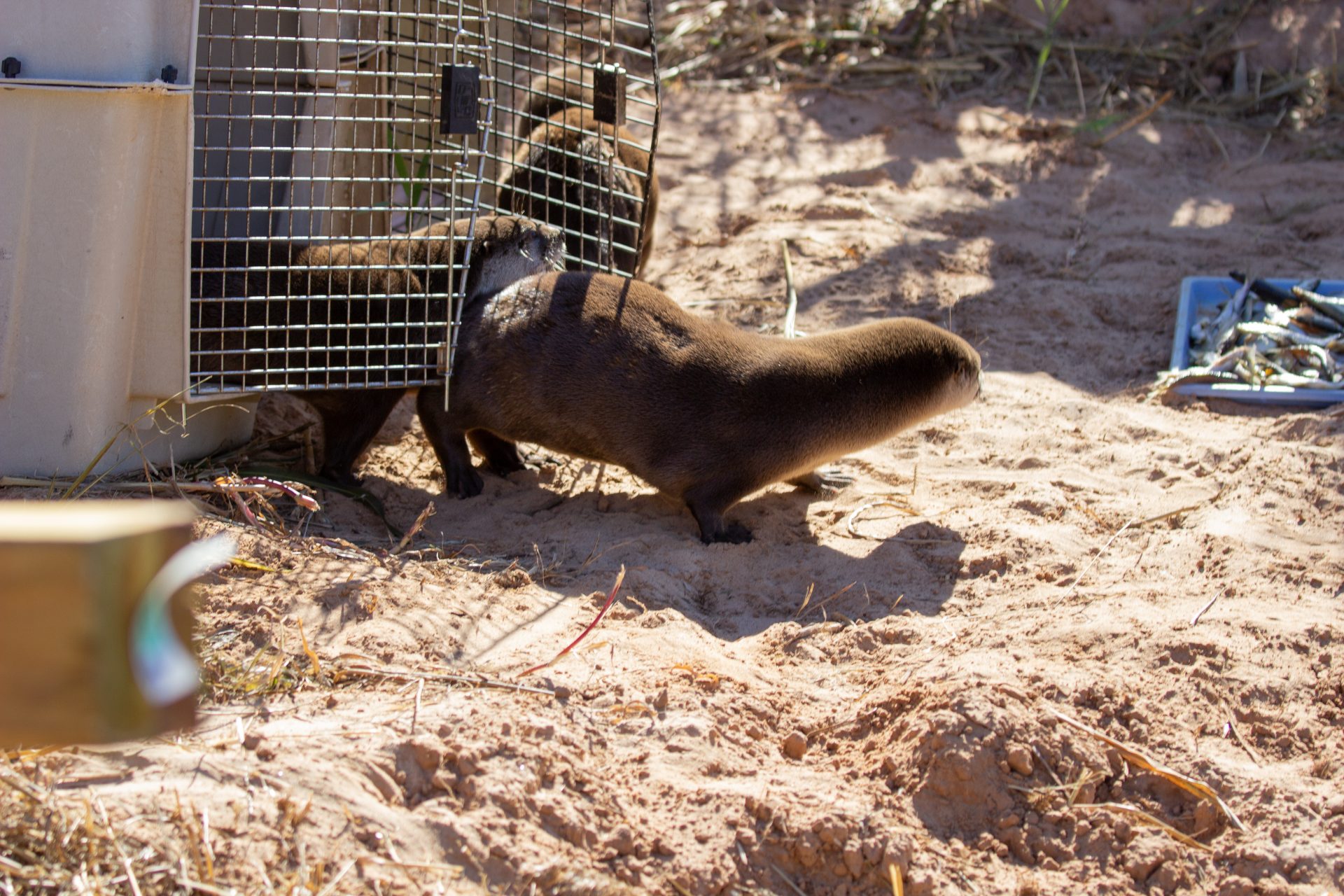
Four rehabbed otters take their first steps of freedom on the banks of the Canadian River.
Beth Wallis/StateImpact Oklahoma


Four rehabbed otters take their first steps of freedom on the banks of the Canadian River.
Beth Wallis/StateImpact Oklahoma
As the waters of the Canadian River flowed through its reedy banks, four adolescent river otters poured out of their crates, scampered through the marsh and splashed into the muddy water.
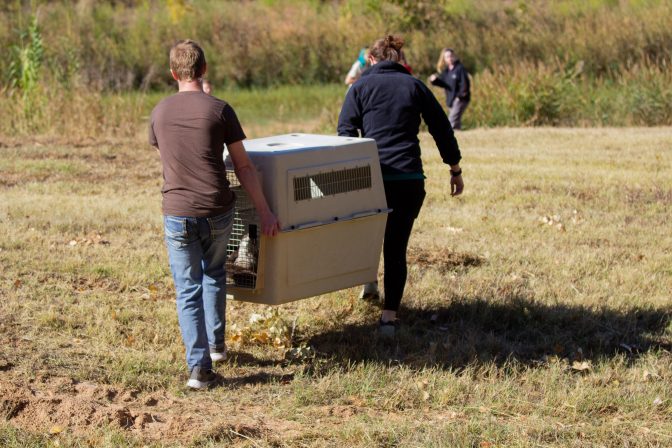
Beth Wallis/StateImpact Oklahoma
WildCare staff members carry kennels of the adolescent otters to their release point.
Against a gentle current, the otters flipped and rolled through the water, diving and dunking, with what can only be described as absolute otter bliss. Within minutes, the four disappeared around the bend, exploring their new home.
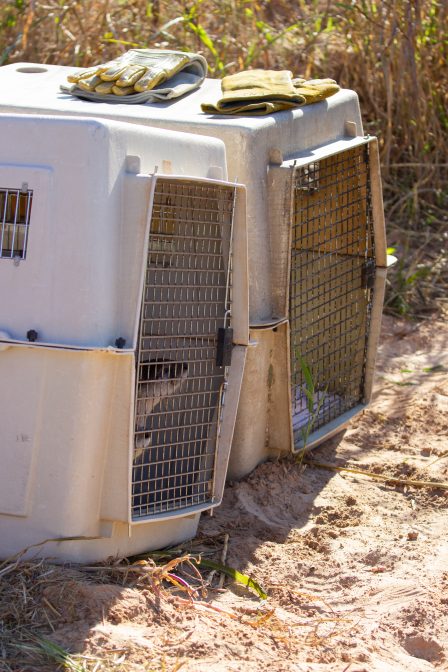
Beth Wallis/StateImpact Oklahoma
Otters wait to be released on the banks of the Canadian River.
The otters were rehabilitated and released in mid-October by WildCare Oklahoma, a nonprofit wildlife rehabilitation facility in Noble. Animal care staff raised the otters since they were just a few weeks old, dreaming of a successful release day like this.
As the otters’ bouncing heads receded further away, Animal Care Manager Hannah Altonji began to get a little emotional.
“I definitely teared up. It’s a very special day to have these otters released,” Altonji said. “We were responsible for hand-feeding when they were still eyes-closed, little small fat potatoes. And now, to see them swim on this river, it was a very exciting day.”
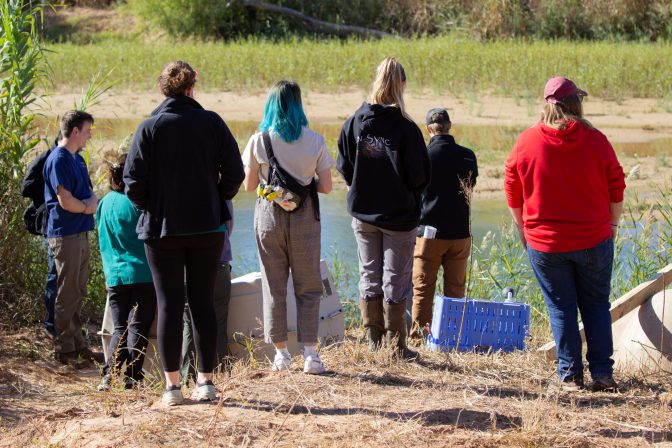
Beth Wallis/StateImpact Oklahoma
WildCare staff members gather at the riverbank to watch the otters swim away.
A tragic start, a happy ending
Three of the otters are littermates that lost their mother before they’d even opened their eyes when she was crushed by an oil rig. A few weeks later, another abandoned otter pup joined the group — beginning the newest phase of the quartet’s young lives: rehabilitation.
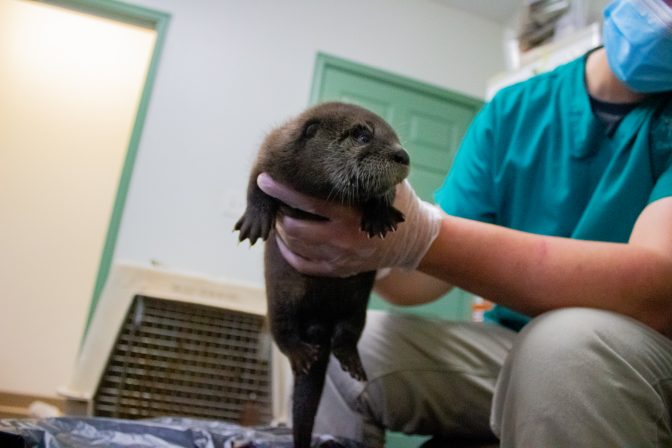
Beth Wallis/StateImpact Oklahoma
A river otter pup is held by a WildCare staff member.
WildCare staff raised the otter pups from bottle-suckling, “small, fat potatoes” that still needed help with burping and going to the bathroom, to exuberant adolescents scurrying and swimming around their outdoor enclosure, smacking their mouths unabashedly as they dined on fish.
But rehabbing four wild animals requires patience and expertise. The staff took special care to prevent the otters from habituating to people. Habituating can be dangerous — even deadly — said Dr. Kyle Abbott, WildCare’s veterinarian.
“How do you hand raise an animal and get it to still be a successful animal in the wild?” Abbott said. “[When] we do see more of the habituation, [there are] behavioral problems where those animals will not display the appropriate fear of humans and actually approach us. … We’re trying to teach them, we’re human, you’re an animal. You’ve got to go away from us.”
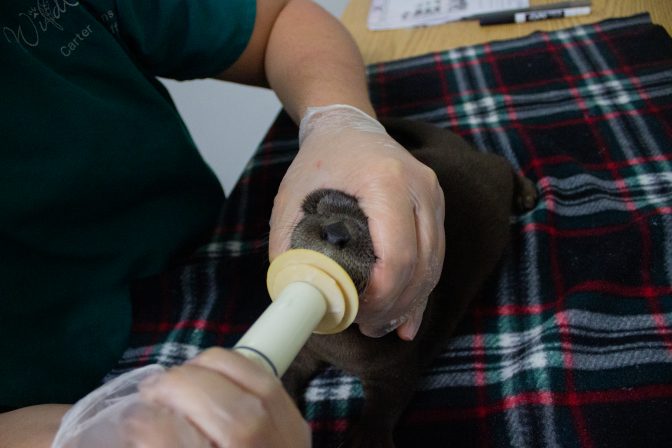
Beth Wallis/StateImpact Oklahoma
Baby otters are at a higher risk of aspiration, says WildCare veterinarian Dr. Kyle Abbott. He says staff have to be careful while feeding, and the babies underwent weekly chest x-rays to make sure there was no pneumonia.
For animals like baby otters that require a high level of care, Abbott said the rehab minimizes human exposure as much as possible. For example, staff members keep conversations sparse and at a whisper during otter feedings so they don’t get as used to human voices. Once they’re eating on their own, Abbott said the team only interacts with them when necessary.
Even still, these otters have interacted with humans substantially more than the average wild otter, so WildCare organized a “soft release” for this group of four. A homeowner near the river has volunteered to keep an eye on the otters and report back to WildCare, as well as bring them regular trays of fish. With any luck, the otters will spread out over miles of their new habitat within a week or two, and they’ll finally be on their own.

Beth Wallis/StateImpact Oklahoma
A baby otter lies on a blanket before being fed by WildCare staff.
Otters in OK
Oklahoma’s otter population got a big boost in the mid-80s, when the Oklahoma Department of Wildlife Conservation reintroduced the species from Louisiana to eastern Oklahoma. River otters are now distributed throughout the eastern half of the state, especially concentrated in the southeast region.
Otters tend to travel long distances — up to about 20 miles — and at about 2 years old, they begin to mate and produce their own litters. Otters often commandeer other animals’ shelters, like beaver dens, for their own. In captivity, otters can live up to about 20 years, but in the wild, that number shrinks to about 5 years.
While the rambunctious river weasels may seem cute and cuddly, Abbott said not only is it dangerous for the otters if people approach them, it can also be dangerous for humans. Otters have strong jaws and especially sharp teeth meant for latching onto struggling prey and ripping into flesh.
While Oklahoma’s otter population is in relatively good shape, habitat water quality is important to monitor, Abbott said. As climate change continues to impact fish populations across the country, the river otter’s future could hang in the balance.
As for the WildCare Four, what began as a rough preface to life has culminated in a new, wild chapter.
“This is what it is all about. We always have this goal at the very end in our minds,” Abbott said. “When we’re working with them, even when they’re really tiny, we know that at the end of the day, we’re going to get them out here, back into the wild.”
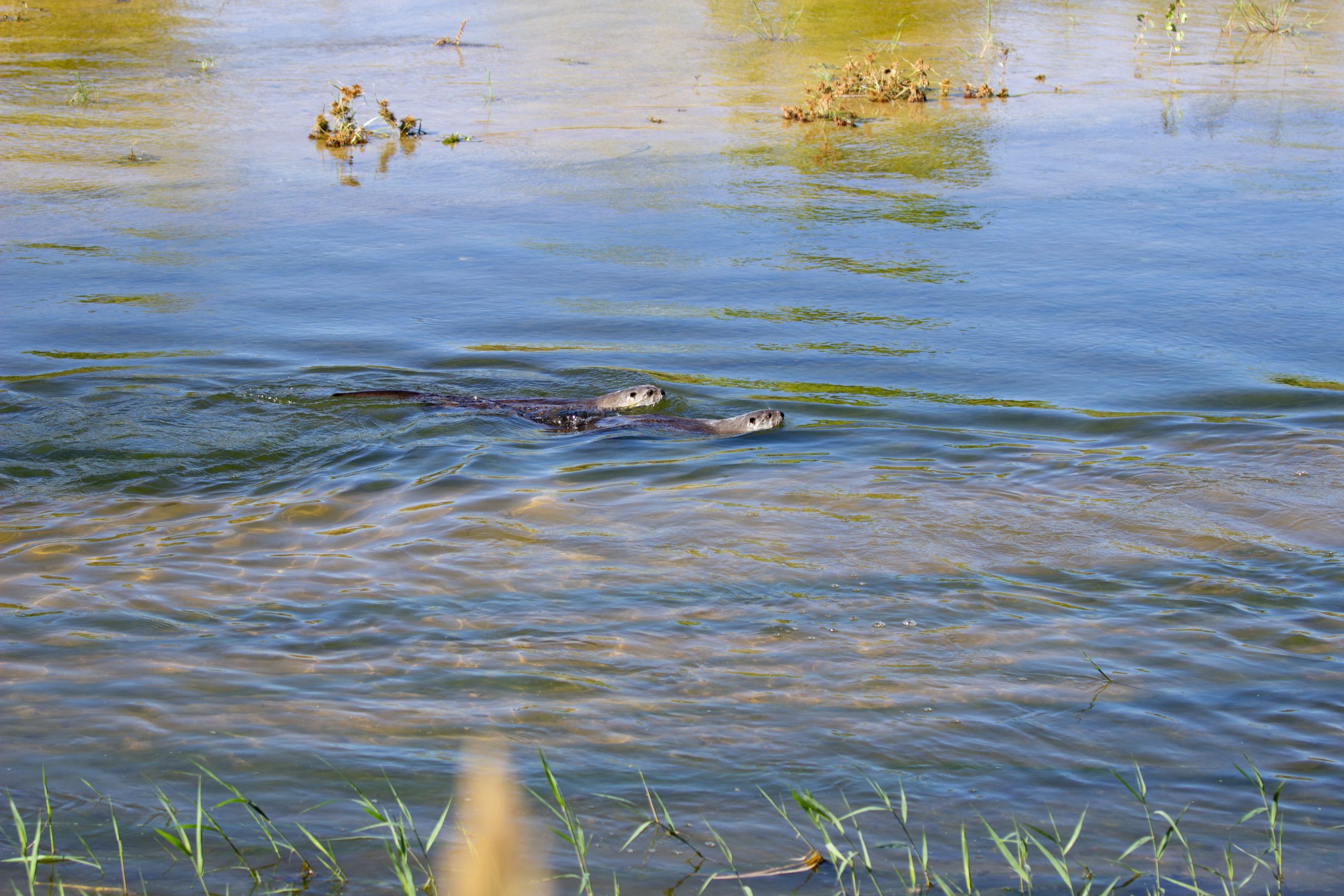
Beth Wallis/StateImpact Oklahoma
After release, two rehabilitated otters swim down the Canadian River.